 W
WSystems ecology is an interdisciplinary field of ecology, a subset of Earth system science, that takes a holistic approach to the study of ecological systems, especially ecosystems. Systems ecology can be seen as an application of general systems theory to ecology. Central to the systems ecology approach is the idea that an ecosystem is a complex system exhibiting emergent properties. Systems ecology focuses on interactions and transactions within and between biological and ecological systems, and is especially concerned with the way the functioning of ecosystems can be influenced by human interventions. It uses and extends concepts from thermodynamics and develops other macroscopic descriptions of complex systems.
 W
WAn aquatic ecosystem is an ecosystem in a body of water. Communities of organisms that are dependent on each other and on their environment live in aquatic ecosystems. The two main types of aquatic ecosystems are marine ecosystems and freshwater ecosystems.
 W
WIn scientific ecology, climax community or climatic climax community is a historic term for a boreal forest community of plants, animals, and fungi which, through the process of ecological succession in the development of vegetation in an area over time, have reached a steady state. This equilibrium was thought to occur because the climax community is composed of species best adapted to average conditions in that area. The term is sometimes also applied in soil development. Nevertheless, it has been found that a "steady state" is more apparent than real, particularly if long-enough periods of time are taken into consideration. Notwithstanding, it remains a useful concept.
 W
WClimax species, also called late seral, late-successional, K-selected or equilibrium species, are plant species that can germinate and grow with limited resources, like they need heat exposure or low water availability. They are the species within forest succession that are more adapted to stable and predictable environments, and will remain essentially unchanged in terms of species composition for as long as a site remains undisturbed.
 W
WClosed ecological systems (CES) are ecosystems that do not rely on matter exchange with any part outside the system.
 W
WCross-boundary subsidies are caused by organisms or materials that cross or traverse habitat patch boundaries, subsidizing the resident populations. The transferred organisms and materials may provide additional predators, prey, or nutrients to resident species, which can affect community and food web structure. Cross-boundary subsidies of materials and organisms occur in landscapes composed of different habitat patch types, and so depend on characteristics of those patches and on the boundaries in between them. Human alteration of the landscape, primarily through fragmentation, has the potential to alter important cross-boundary subsidies to increasingly isolated habitat patches. Understanding how processes that occur outside of habitat patches can affect populations within them may be important to habitat management.
 W
WAn ecosystem is a community of living organisms in conjunction with the nonliving components of their environment, interacting as a system. These biotic and abiotic components are linked together through nutrient cycles and energy flows. Energy enters the system through photosynthesis and is incorporated into plant tissue. By feeding on plants and on one another, animals play an important role in the movement of matter and energy through the system. They also influence the quantity of plant and microbial biomass present. By breaking down dead organic matter, decomposers release carbon back to the atmosphere and facilitate nutrient cycling by converting nutrients stored in dead biomass back to a form that can be readily used by plants and other microbes.
 W
WEcosystem diversity deals with the variations in ecosystems within a geographical location and its overall impact on human existence and the environment.
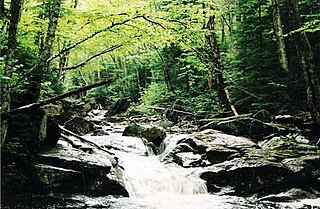 W
WEcosystem ecology is the integrated study of living (biotic) and non-living (abiotic) components of ecosystems and their interactions within an ecosystem framework. This science examines how ecosystems work and relates this to their components such as chemicals, bedrock, soil, plants, and animals.
 W
WAn ecosystem engineer is any animal that creates, significantly modifies, maintains or destroys a habitat. These organisms can have a large impact on species richness and landscape-level heterogeneity of an area. As a result, ecosystem engineers are important for maintaining the health and stability of the environment they are living in. Since all organisms impact the environment they live in in one way or another, it has been proposed that the term "ecosystem engineers" be used only for keystone species whose behavior very strongly affects other organisms.
 W
WAn ecosystem model is an abstract, usually mathematical, representation of an ecological system, which is studied to better understand the real system.
 W
WEcosystem services are the many and varied benefits to humans provided by the natural environment and from healthy ecosystems. Such ecosystems include, for example, agroecosystems, forest ecosystems, grassland ecosystems and aquatic ecosystems. These ecosystems, functioning in healthy relationship, offer such things like natural pollination of crops, clean air, extreme weather mitigation, and human mental and physical well-being. Collectively, these benefits are becoming known as 'ecosystem services', and are often integral to the provisioning of clean drinking water, the decomposition of wastes, and resilience and productivity of food ecosystems.
 W
WIn ecology, edge effects are changes in population or community structures that occur at the boundary of two or more habitats. Areas with small habitat fragments exhibit especially pronounced edge effects that may extend throughout the range. As the edge effects increase, the boundary habitat allows for greater biodiversity.
 W
WEmbodied energy is the sum of all the energy required to produce any goods or services, considered as if that energy was incorporated or 'embodied' in the product itself. The concept can be useful in determining the effectiveness of energy-producing or energy saving devices, or the "real" replacement cost of a building, and, because energy-inputs usually entail greenhouse gas emissions, in deciding whether a product contributes to or mitigates global warming. One fundamental purpose for measuring this quantity is to compare the amount of energy produced or saved by the product in question to the amount of energy consumed in producing it.
 W
WEnvironmental consulting is often a form of compliance consulting, in which the consultant ensures that the client maintains an appropriate measure of compliance with environmental regulations. There are many types of environmental consultants, but the two main groups are those who enter the field from the industry side, and those who enter the field from the environmentalist side.
 W
WThe beaver is a keystone species, increasing biodiversity in its territory through creation of ponds and wetlands. As wetlands are formed and riparian habitats enlarged, aquatic plants colonize newly available watery habitat. Insect, invertebrate, fish, mammal, and bird diversities are also expanded. Effects of beaver recolonization on native and non-native species in streams where they have been historically absent, particularly dryland streams, is not well-researched.
 W
WEnvironmental resource management is the management of the interaction and impact of human societies on the environment. It is not, as the phrase might suggest, the management of the environment itself. Environmental resources management aims to ensure that ecosystem services are protected and maintained for future human generations, and also maintain ecosystem integrity through considering ethical, economic, and scientific (ecological) variables. Environmental resource management tries to identify factors affected by conflicts that rise between meeting needs and protecting resources. It is thus linked to environmental protection, sustainability, integrated landscape management, natural resource management, fisheries management, forest management, and wildlife management, and others.
 W
WIn oceanic biogeochemistry, the f-ratio is the fraction of total primary production fuelled by nitrate. The ratio was originally defined by Richard Eppley and Bruce Peterson in one of the first papers estimating global oceanic production. This fraction was originally believed significant because it appeared to directly relate to the sinking (export) flux of organic marine snow from the surface ocean by the biological pump. However, this interpretation relied on the assumption of a strong depth-partitioning of a parallel process, nitrification, that more recent measurements has questioned.
 W
WA functional response in ecology is the intake rate of a consumer as a function of food density. It is associated with the numerical response, which is the reproduction rate of a consumer as a function of food density. Following C. S. Holling, functional responses are generally classified into three types, which are called Holling's type I, II, and III.
 W
WThe Greater Yellowstone Ecosystem (GYE) is one of the last remaining large, nearly intact ecosystems in the northern temperate zone of the Earth. It is located within the northern Rocky Mountains, in areas of northwestern Wyoming, southwestern Montana, and eastern Idaho, and is about 22 million acres. Yellowstone National Park and the Yellowstone Caldera 'hotspot' are within it.
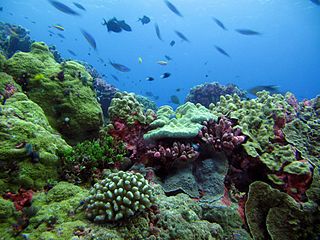 W
WIn ecology, the term habitat summarises the array of resources, physical and biotic factors that are present in an area, such as to support the survival and reproduction of a particular species. A species habitat can be seen as the physical manifestation of its ecological niche. Thus, habitat is a species-specific term, fundamentally different from concepts such as environment or vegetation assemblages, for which the term habitat-type is more appropriate.
 W
WThe International Arctic Research Center, or IARC, established in 1999, is a research institution focused on integrating and coordinating study of Climate change in the Arctic. The primary partners in IARC are Japan and the United States. Participants include organizations from Canada, China, Denmark, Germany, Japan, Norway, Russia, the United Kingdom, and the United States.
 W
WLandscape ecology is the science of studying and improving relationships between ecological processes in the environment and particular ecosystems. This is done within a variety of landscape scales, development spatial patterns, and organizational levels of research and policy. Concisely, landscape ecology can be described as the science of landscape diversity as the synergetic result of biodiversity and geodiversity.
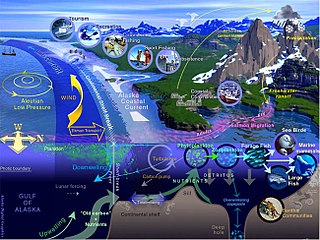 W
WLarge marine ecosystems (LMEs) are regions of the world's oceans, encompassing coastal areas from river basins and estuaries to the seaward boundaries of continental shelves and the outer margins of the major ocean current systems. They are relatively large regions on the order of 200,000 km² or greater, characterized by distinct bathymetry, hydrography, productivity, and trophically dependent populations. Productivity in LME protected areas is generally higher than in the open ocean.
 W
WA permaculture project is a deployment of permaculture practices on an ongoing basis.
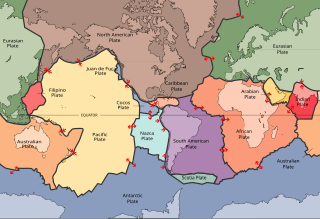 W
WA lithosphere is the rigid, outermost shell of a terrestrial-type planet or natural satellite. On Earth, it is composed of the crust and the portion of the upper mantle that behaves elastically on time scales of thousands of years or greater. The crust and upper mantle are distinguished on the basis of chemistry and mineralogy.
 W
WMarine ecosystems are the largest of Earth's aquatic ecosystems and are distinguished by waters that have a high salt content. These systems contrast with freshwater ecosystems, which have a lower salt content. Marine waters cover more than 70% of the surface of the Earth and account for more than 97% of Earth's water supply and 90% of habitable space on Earth. Marine ecosystems include nearshore systems, such as the salt marshes, mudflats, seagrass meadows, mangroves, rocky intertidal systems and coral reefs. They also extend outwards from the coast to include offshore systems, such as the surface ocean, pelagic ocean waters, the deep sea, oceanic hydrothermal vents, and the sea floor. Marine ecosystems are characterized by the biological community of organisms that they are associated with and their physical environment.
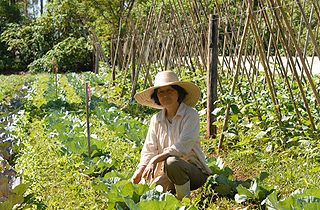 W
WA nutrient cycle is the movement and exchange of organic and inorganic matter back into the production of matter. Energy flow is a unidirectional and noncyclic pathway, whereas the movement of mineral nutrients is cyclic. Mineral cycles include the carbon cycle, sulfur cycle, nitrogen cycle, water cycle, phosphorus cycle, oxygen cycle, among others that continually recycle along with other mineral nutrients into productive ecological nutrition.
 W
WPermaculture is an approach to land management and philosophy that adopts arrangements observed in flourishing natural ecosystems. It includes a set of design principles derived using whole systems thinking. It uses these principles in fields such as regenerative agriculture, rewilding, and community resilience. Permaculture was originally a portmanteau of "permanent agriculture", but was later adjusted to "permanent culture", to incorporate necessary social aspects as inspired by Masanobu Fukuoka's natural farming. The term was coined by Bill Mollison and David Holmgren in 1978, who formulated the concept in opposition to Western industrialized methods and in congruence with Indigenous or traditional knowledge.
 W
WA rank abundance curve or Whittaker plot is a chart used by ecologists to display relative species abundance, a component of biodiversity. It can also be used to visualize species richness and species evenness. It overcomes the shortcomings of biodiversity indices that cannot display the relative role different variables played in their calculation.
 W
WTrophic species are a scientific grouping of organisms according to their shared trophic (feeding) positions in a food web or food chain. Trophic species have identical prey and a shared set of predators in the food web. This means that members of a trophic species share many of the same kinds of ecological functions. The idea of trophic species was first devised by Joel Cohen and Frederick Briand in 1984 to redefine assessment of the ratio of predators to prey within a food web. The category may include species of plant, animal, a combination of plant and animal, and biological stages of an organism. The reassessment grouped similar species according to habit rather than genetics. This resulted in a ratio of predator to prey in food webs is generally 1:1. By assigning groups in a trophic manner, relationships are linear in scale. This allows for predicting the proportion of different trophic links in a community food web.
 W
WIn ecology, urban ecosystems are considered a ecosystem functional group within the intensive land-use biome. They are structurally complex ecosystems with highly heterogeneous and dynamic spatial structure that is created and maintained by humans. They include cities, smaller settlements and industrial areas, that are made up of diverse patch types. Urban ecosystems rely on large subsidies of imported water, nutrients, food and other resources. Compared to other natural and artificial ecosystems human population density is high, and their interaction with the different patch types produces emergent properties and complex feedbacks among ecosystem components.
 W
WA wildlife corridor, habitat corridor, or green corridor is an area of habitat connecting wildlife populations separated by human activities or structures. This allows an exchange of individuals between populations, which may help prevent the negative effects of inbreeding and reduced genetic diversity that often occur within isolated populations. Corridors may also help facilitate the re-establishment of populations that have been reduced or eliminated due to random events.